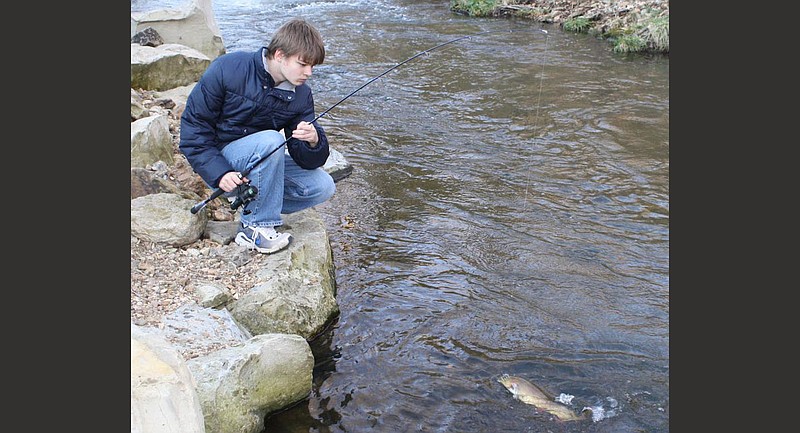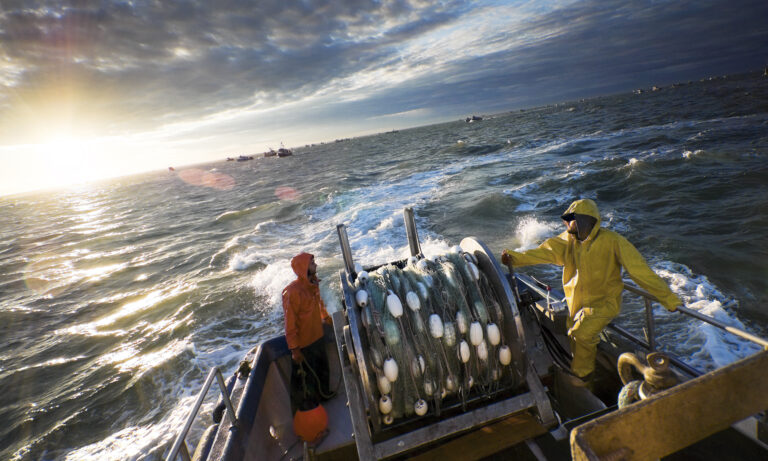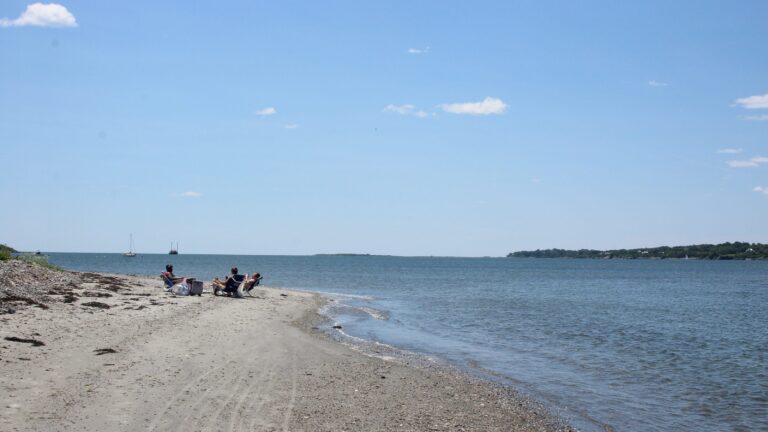To read a river for fishing, observe the current, look for areas with cover and structure, and pay attention to the flow patterns and water clarity. This will help you locate the best spots for casting and catching fish.
Rivers with deeper pools, rocky banks, or fallen trees often attract fish as they provide shelter and food sources. By understanding the river’s characteristics, you can increase your chances of a successful fishing trip. When it comes to fishing in a river, it’s essential to have a keen eye for reading the water.
Properly understanding the river’s currents, structures, and flow patterns can greatly improve your chances of success. By observing these factors, you’ll be able to locate the best spots where fish are likely to be present. In this guide, we will delve into the art of reading a river for fishing, providing you with effective strategies to enhance your skills. Whether you’re an experienced angler or a beginner looking to expand your knowledge, the following tips and techniques will help you navigate the complexities of river fishing and maximize your catch.

Credit: www.arkansasonline.com
Why Understanding River Dynamics Is Essential
Importance Of River Dynamics For Successful Fishing
Understanding river dynamics is essential for successful fishing. The dynamic nature of rivers affects fish behavior and determines their habitat. By reading the river and gaining insights into its flow, structure, and habitat, anglers can significantly improve their chances of catching fish.
Here’s why understanding river dynamics is so crucial:
The Impact Of Water Flow On Fish Behavior
- Faster currents: Fish often gather in areas with faster currents, as they provide an abundance of food and oxygen.
- Eddies and pockets: Slow-moving sections of the river, such as eddies and pockets, serve as resting spots for fish seeking shelter from the strong current.
- Water temperature: The flow of water affects temperature variations, influencing fish activity and migration patterns.
- Spawning areas: Fish seek areas with optimal flow conditions for successful spawning, which is vital for sustaining healthy populations.
The Correlation Between River Structure And Fish Habitat
- Undercuts and overhangs: Fallen trees, rocks, and riparian vegetation create undercuts and overhangs, providing fish with shade, protection, and hiding spots for ambush feeding.
- Riffles and runs: Riffles, characterized by shallow, fast-flowing water, attract fish as they stir up food sources. Runs, which are deeper and slower sections, serve as travel corridors for fish moving upstream or downstream.
- Pools and deep holes: Pools and deep holes act as refuge areas during periods of high flow, allowing fish to conserve energy and avoid being swept away. These areas also provide cover and shelter from predators.
- Gravel beds and silt deposits: Fish often spawn in gravel beds, as they provide habitats suitable for egg incubation. Silt deposits, on the other hand, can negatively impact habitat quality by smothering aquatic vegetation and reducing oxygen levels.
Understanding the intricate relationship between river dynamics and fish behavior enables anglers to make informed decisions when selecting fishing spots and choosing appropriate techniques. By taking into account the impact of water flow, river structure, and fish habitat, anglers can greatly enhance their fishing experience and increase their chances of reeling in that trophy catch.
So, next time you head out to fish a river, remember to read its dynamics and uncover the hidden secrets that lie beneath its surface. Happy fishing!
Identifying Key Features Of A River
The Role Of Bends And Currents In Attracting Fish:
Rivers are dynamic ecosystems that offer a diverse range of habitats for fish. Understanding the role of bends and currents can greatly enhance your fishing experience. Here are the key points to consider:
- Bends in a river create areas of slower and faster-moving water. Fish are often drawn to these bends as they provide refuge from stronger currents and offer a steady supply of food.
- The outer edge of a bend experiences faster water flow, creating a deep channel. This area is ideal for predatory fish that can ambush their prey as it gets carried along with the current.
- The inner edge of a bend tends to have slower-moving water, allowing fish to rest and conserve energy. This area is often characterized by submerged structures like fallen trees and vegetation, providing shelter for fish.
- When fishing a bend, target the deeper areas along the outer edge where larger fish are likely to be lurking. Casting your bait upstream and gradually allowing it to drift down with the current can be an effective technique.
Understanding Riffles, Runs, And Pools:
Rivers are also characterized by specific features known as riffles, runs, and pools. Each of these features attracts fish in different ways. Here’s what you need to know:
- Riffles are shallow sections of a river where the water is broken and turbulent. They are formed by a rapid flow over rocks or a gravel bed. Riffles provide well-oxygenated water and an abundance of insect life, making them attractive feeding grounds for fish.
- Look for riffles with slower currents on the downstream side, as fish often position themselves just below the riffle to intercept passing prey. Casting into the riffle and allowing your bait to drift downstream can yield good results.
- Runs are stretches of relatively uniform depth and current speed. They are often found between riffles and pools. Fish use runs as a pathway to move between different parts of the river.
- Pools are deeper sections of a river, usually found after a riffle or run. They offer a refuge for fish from strong currents and provide a cooler habitat during hot weather. Pools tend to hold larger fish that prefer more stable conditions.
- When targeting pools, focus on areas near the edges where the water transitions from shallow to deep. Fish tend to congregate around submerged structures or areas with vegetation for cover and ambush opportunities.
How To Locate Underwater Structures Like Drop-Offs And Submerged Logs:
Unseen underwater structures like drop-offs and submerged logs can significantly influence fish behavior and activity. Locating these structures can greatly improve your chances of hooking a catch. Consider the following tips:
- Look for areas where the river bottom changes abruptly, indicating a drop-off. These sudden changes in depth provide hiding spots for fish and can act as natural feeding zones. Use a depth finder or polarized sunglasses to identify these under-the-radar structures.
- Submerged logs, fallen trees, and boulders are magnets for fish. They create hiding spots, break up the current, and offer protection against predators. Cast near submerged structures and allow your bait to drift naturally to entice fish into striking.
- Pay attention to any visible disturbances on the water’s surface, such as foam lines or debris accumulation. These can indicate the presence of submerged logs or other structures. Position yourself appropriately to take advantage of these fish-holding areas.
- Practice patience and experiment with different techniques when fishing around underwater structures. Remember, fish are often positioned near these structures to exploit the cover and potential food sources they provide.
Now that you understand the key features of a river and how to identify them, you’re well-equipped to read the river and maximize your fishing success. Happy angling!
Reading The Signs On The Water’S Surface
When it comes to fishing in a river, one of the most important skills you can develop is the ability to read the signs on the water’s surface. Understanding the subtle hints that the river is giving you can greatly increase your chances of a successful fishing trip.
In this section, we will explore three key aspects of reading the signs on the water’s surface: analyzing water color and clarity, recognizing the presence of eddies and boils, and identifying the occurrence of surface feeding activity.
Analyzing Water Color And Clarity
- Water color: The color of the water can provide crucial insights about the river’s current conditions and the potential presence of fish. Here’s what you need to know:
- Muddy water: A muddy or turbid appearance can indicate recent rainfall or increased sediment levels. In such conditions, fish may have reduced visibility and rely more on their other senses to locate prey.
- Clear water: Clear water offers better visibility for both fish and anglers. Fish are more likely to be easily spooked in clear water, so a stealthy approach is crucial.
- Water clarity: Assessing the clarity of the water is equally important in determining fish behavior:
- Cloudy water: Cloudy water can result from suspended particles, algae blooms, or other factors. In such conditions, fish may be more active and less cautious, as their visibility is reduced.
- Clear water: In clear water, fish may be more easily spooked and may require a more finesse-based approach to entice them.
Recognizing The Presence Of Eddies And Boils
- Eddies: Eddies are circular or swirling areas of water that can indicate changes in the river’s flow and underwater structures. Understanding the presence and behavior of eddies can help you target prime fishing spots:
- Slow-moving water: Eddies are often found in slower-moving water, such as behind large rocks or along the riverbank. Fish tend to gather in these areas to conserve energy and wait for food to come to them.
- Baitfish gathering: Eddies can create a trap for baitfish, attracting larger predatory fish. So keep an eye out for any swirling water patterns or schools of baitfish near eddies.
- Boils: Boils are characterized by an upward movement and disturbance of the water’s surface. Recognizing boils can indicate the presence of feeding fish:
- Insects or small prey: Boils are often caused by fish feeding near the surface on insects or small prey. This can be an excellent opportunity to target surface-feeding fish such as trout or bass.
- Target active feeding zones: Boils can be short-lived, so quickly casting to the area of disturbance can significantly increase your chances of enticing a strike.
Identifying The Occurrence Of Surface Feeding Activity
- Rises and ripples: Surface feeding activity can be observed through rises and ripples on the water’s surface. Here’s how to identify and take advantage of this behavior:
- Rise forms: A rise form refers to the type of disturbance made by a fish when it feeds near the surface. Different species exhibit distinctive rise forms, such as a splashy rise for a trout or a subtle swirl for a bass.
- Ripples and rings: Even if you don’t witness a rise, ripples or rings spreading outwards on the water’s surface can indicate fish activity. It’s worth casting your bait or lure near these areas to tempt any feeding fish.
- Insect hatches: One of the most exciting opportunities for surface fishing is during insect hatches. Here’s what to watch for:
- Increased insect activity: Keep an eye out for an influx of insects on the water’s surface. This can trigger a feeding frenzy as fish actively target these readily available food sources.
- Mimicking insect behavior: Use flies or lures that imitate the insects present in the hatch. This will increase the likelihood of enticing strikes from fish focusing on these specific prey items.
Remember, understanding and interpreting the signs on the water’s surface is just the first step to successful fishing in a river. By analyzing water color and clarity, recognizing the presence of eddies and boils, and identifying surface feeding activity, you’ll be well on your way to becoming a skillful river angler.
Happy fishing!
Conclusion
In essence, understanding how to read a river for fishing is a skill that can greatly enhance your fishing experience. By observing the flow, structure, and features of the river, you can identify the best spots to cast your line and increase your chances of success.
Keeping an eye out for indicators such as riffles, bends, and eddies can help you locate areas where fish are likely to congregate. Additionally, being attuned to the different seasons and water levels can provide valuable insights into fish behavior and migration patterns.
Remember to adapt your fishing techniques accordingly and be patient, as reading a river is an ongoing learning process. By honing this skill and continually seeking opportunities to explore new waterways, you can truly become a master angler, finding success in even the most challenging of river fishing conditions.
Happy fishing!






